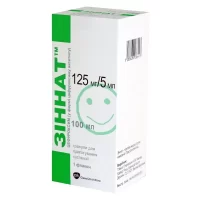$28.20
Purpose: Azithromycin fights bacterial infections by inhibiting protein synthesis, treating respiratory infections.
Description
Ormax (azithromycin) Powder 30 ml Suspension 200 mg/5 ml
Ingredients
Each 5 ml of Ormax suspension contains 200 mg of azithromycin.
Dosage
The dosage of Ormax depends on the condition being treated. It is important to follow the prescribed dosage and duration recommended by your healthcare provider.
Indications
Ormax is indicated for the treatment of bacterial infections such as respiratory tract infections, skin and soft tissue infections, and sexually transmitted diseases.
Contraindications
Do not use Ormax if you are allergic to azithromycin or any other macrolide antibiotics.
Directions
Shake the suspension well before each use. Measure the dose using the provided measuring device. Take Ormax as directed by your healthcare provider.
Scientific Evidence
Azithromycin, the active ingredient in Ormax, is a broad-spectrum antibiotic that works by inhibiting bacterial protein synthesis. Studies have shown that azithromycin is effective in treating a wide range of bacterial infections, including respiratory infections and skin infections.
Research published in the Journal of Antimicrobial Chemotherapy demonstrated the efficacy of azithromycin in the treatment of community-acquired pneumonia, showing comparable effectiveness to other commonly used antibiotics.
Additional Information
It is important to complete the full course of Ormax as prescribed, even if you start to feel better before the medication is finished. Stopping the medication prematurely can lead to the development of antibiotic-resistant bacteria.
Consult your healthcare provider if you experience any severe side effects while taking Ormax, such as severe diarrhea, abdominal pain, or skin rash.







Recent Reviews